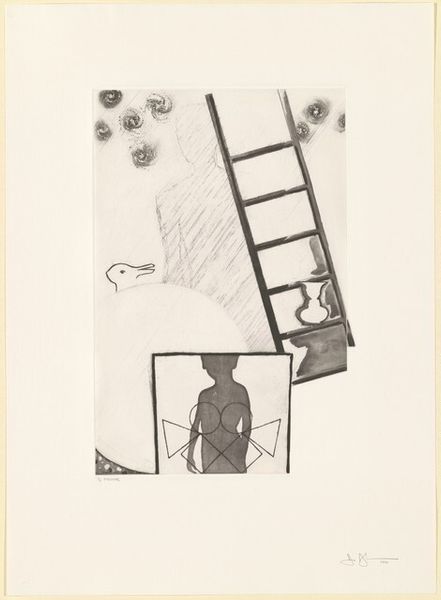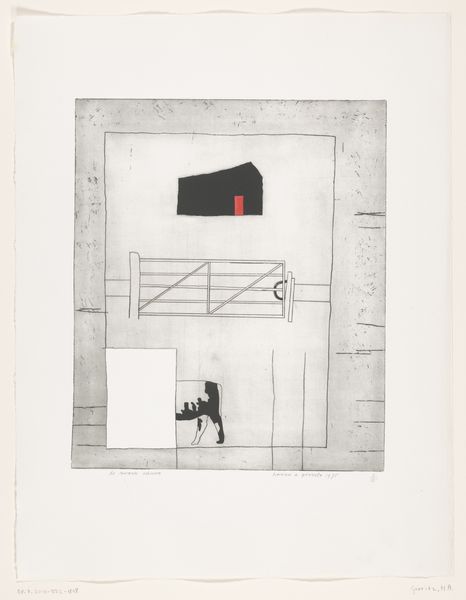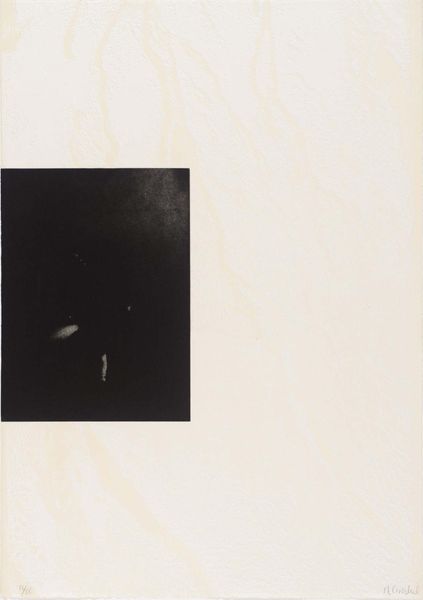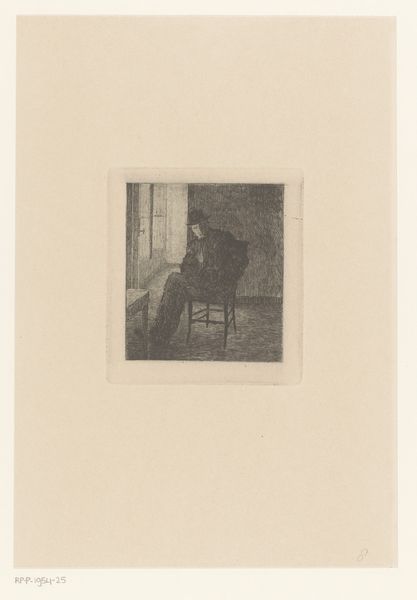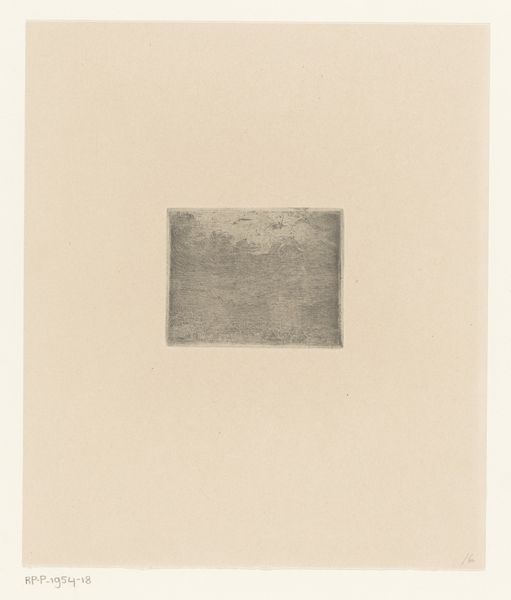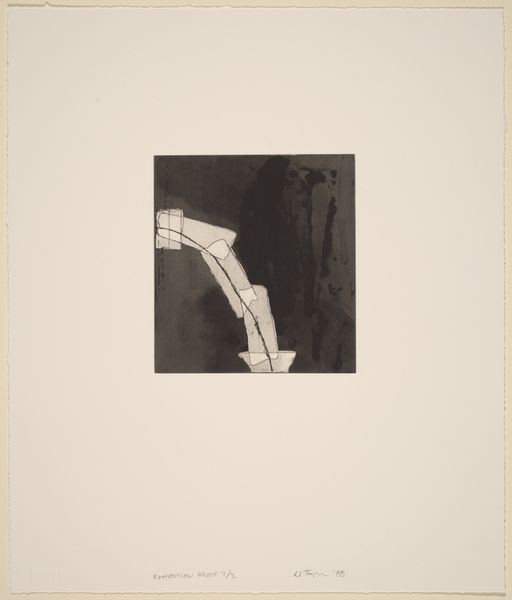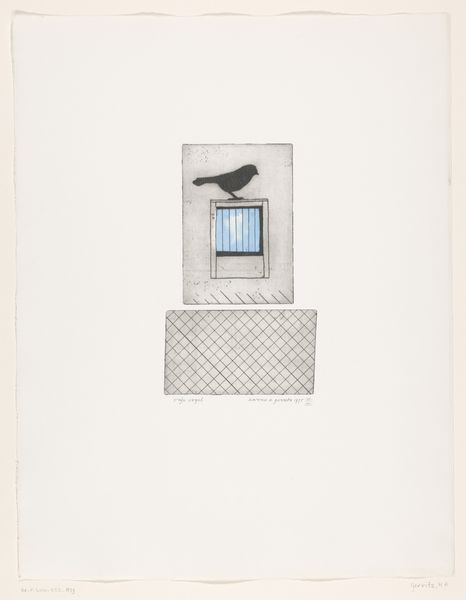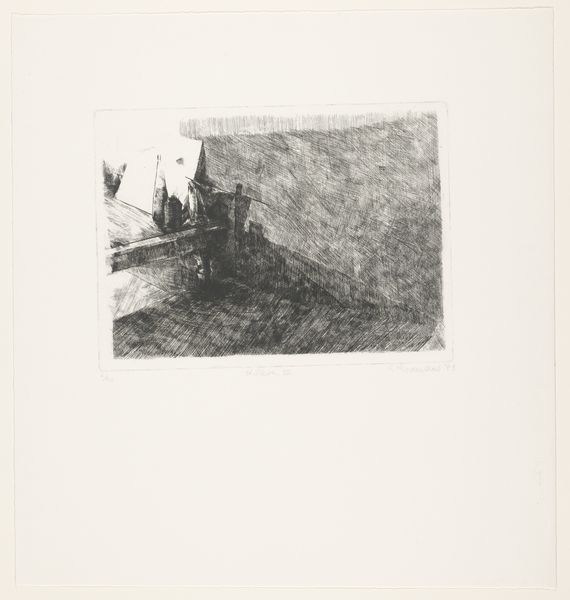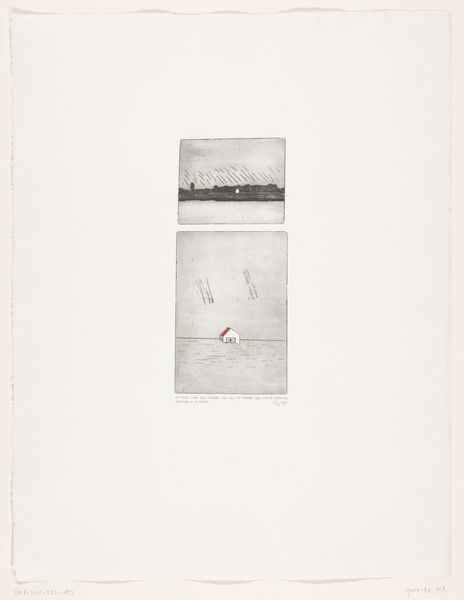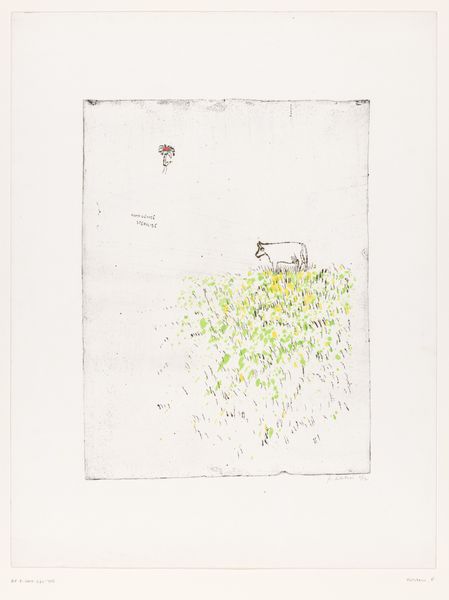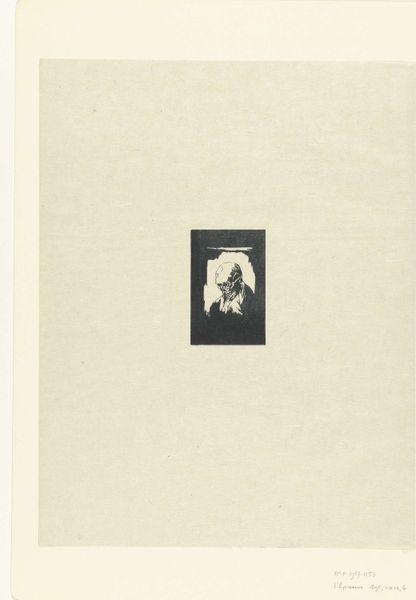
drawing, paper, ink
#
portrait
#
drawing
#
figuration
#
paper
#
ink
#
geometric
#
cityscape
#
modernism
#
monochrome
Dimensions: height 655 mm, width 508 mm, height 355 mm, width 335 mm
Copyright: Rijks Museum: Open Domain
Curator: Harrie A. Gerritz created "Kleine jongen met fantastisch uitzicht," or "Little Boy with Fantastic View," in 1976. It’s an ink drawing on paper, currently held here at the Rijksmuseum. Editor: The mood hits me instantly – it feels both introspective and slightly unsettling, wouldn't you say? Like looking out on the world from a strange, sheltered space. The stark contrast and the silhouette figure amplify that sense, almost like a film noir scene starring a child. Curator: Indeed. The composition directs our gaze, first to the dark figure of the boy, rendered in a striking silhouette, and then through the window-like frame behind him. Note how the artist uses geometric elements to abstract the cityscape beyond, reducing buildings to simple lines and shapes. The entire structure hinges on binaries: dark/light, figure/ground, representation/abstraction. Editor: The child's form, that stark shadow… it's almost like a void, really, a sort of screen onto which we project our own narratives. And then, those almost seismographic lines outside the window—are they buildings, or is Gerritz showing us the boy's energy, his hopes maybe, reaching out to the world beyond? Curator: The geometric cityscape beyond is presented with precision; the stark black ink juxtaposes against the textured grey scale within and around the architectural setting of the viewing port, offering a structured interpretation of urbanity. Editor: The drawing feels surprisingly modern. All those blocks of tiny gray lettering look almost like some kind of data matrix. A coded landscape or background almost… so does the ‘fantastic view’ refer to something literal or, maybe, the boy’s imaginative coding of the world? It's very suggestive in that way, the view may not exist beyond that conceptual framing. Curator: The employment of ink creates this interesting surface dynamism, lending a tactile, almost rough, materiality that’s distinct from its perspectival focus. The visual tension between the abstracted architectural shapes, rendered with meticulous detail and graphic mark-making is essential. Editor: So, we started with this image giving off an introspective feeling and we drilled into what the geometry represents and the emotional feel it can leave for the viewer. Curator: It reveals how close observation allows viewers an analytical reading of space. Thank you for your astute observations.
Comments
No comments
Be the first to comment and join the conversation on the ultimate creative platform.
